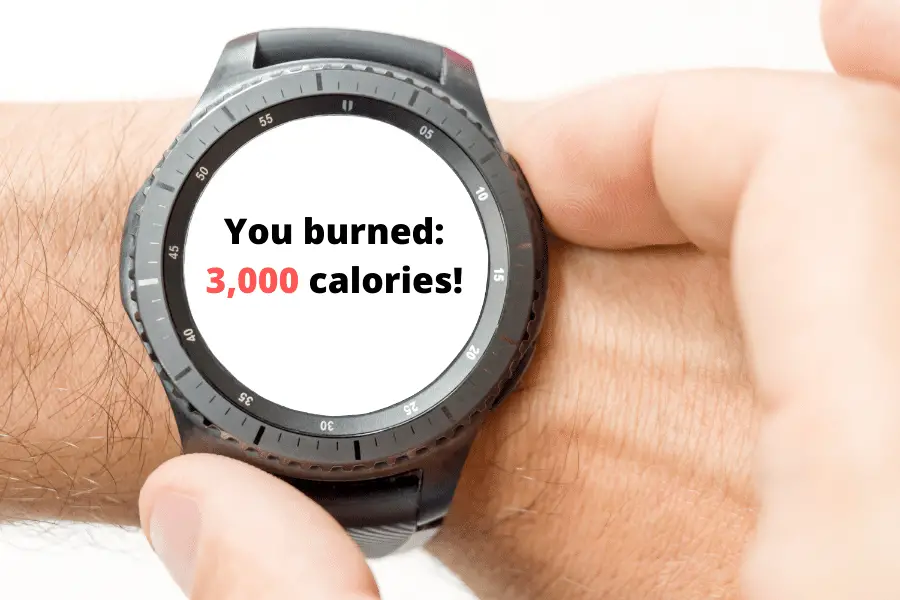First of all, I’m not advocating that you should lose weight while training for a half marathon. In fact, if I told you that you will lose weight while training for a half marathon I might be misleading you.
How to lose weight while training for a half marathon?
The correct time to lose weight when training for a half marathon is prior to training for a half marathon. Sometimes runners are misled thinking that running alone will help you lose weight. While you will more than likely lose weight while training for a half marathon, the key to losing weight is based on 80% of what you consume. By also including strength training and interval training, you increase the possibilities of weight loss during training.
If you follow a good diet that includes good nutrition then weight loss should naturally occur over the course of a 12-16 week half marathon training schedule.
Sometimes, however, weight loss during a rigorous half marathon training cycle is not a good thing. In order to take a look at when weight loss is a bad thing or a good thing during training and when to actually lose weight let’s look at two different athletes.
Athlete #1: Jay
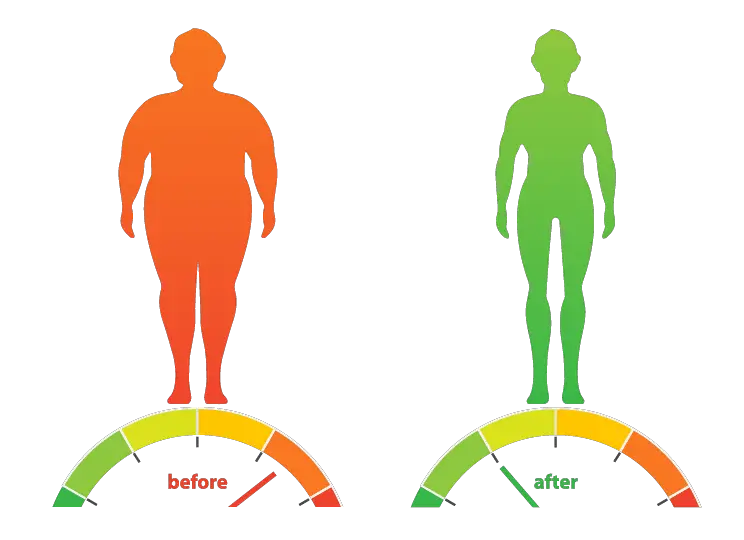 Jay is a fairly sedentary individual in his early thirties. He hasn’t been too involved in sports for most of his career. Jay is what you would consider more than overweight.
Jay is a fairly sedentary individual in his early thirties. He hasn’t been too involved in sports for most of his career. Jay is what you would consider more than overweight.
He finally has decided to take charge of his weight issues and lose weight by attempting to run a half marathon (or simply finish it).
He’s been eating pretty much whatever he wants with no restrictions. He’s heard many people tell him that running can help change his life and shed all of those extra pounds.
What should Jay’s strategy be when it comes to losing weight?
Since Jay hasn’t been involved in many sports, he needs to ease into running by following a walk/run interval method so that he can eventually run the distance of a 5K without stopping. Although he will be starting to run more and more as each week progress, Jay really needs to focus on getting his eating under control and aim for more well-balanced meals.
Related: Is It Ok To Run If You’re Overweight?
Since he’s overweight taking it easy and listening to his body are going to be key factors to watch for so that he doesn’t get injured. When you are excessively overweight (50 pounds+ over your ideal weight) you need to be careful when running.
Running is an impact sport. With each gait running cycle your body is landing on one foot with 2 to 3 times your weight on impact. The impact force could lead to undue stress on your lower extremities, such as your knees, ankles, and feet.
Unfortunately, until Jay brings his weight down, it would be unwise to start training for a half marathon until he reduces his weight with 20 pounds of his ideal weight. This is how overweight individuals end up injuring themselves trying to run and never again take up the sport.
In order to lose weight, he needs to reduce his total calorie intake by at least 500 calories a day. If he reduces his calories by 500 a day he will have a total weekly deficit of 3,500 kilocalories. 3,500 kilocalories (calories) is the amount of energy required to gain or lose one pound of weight. Two great apps for your smartphone to track daily calorie intake are MyFitnessPal and LoseIt! both of which are free.
If Jay is desperate to complete a first half marathon, he might want to consider trying to walk his first half marathon. With enough time, he should be able to walk a half marathon and finish before the cutoff time. Training is required but far from the extent of the requirements for running a half marathon.
For a detailed post on walking a half marathon, check out: Can you walk a half marathon in 4 hours?
Athlete #2: Hailey
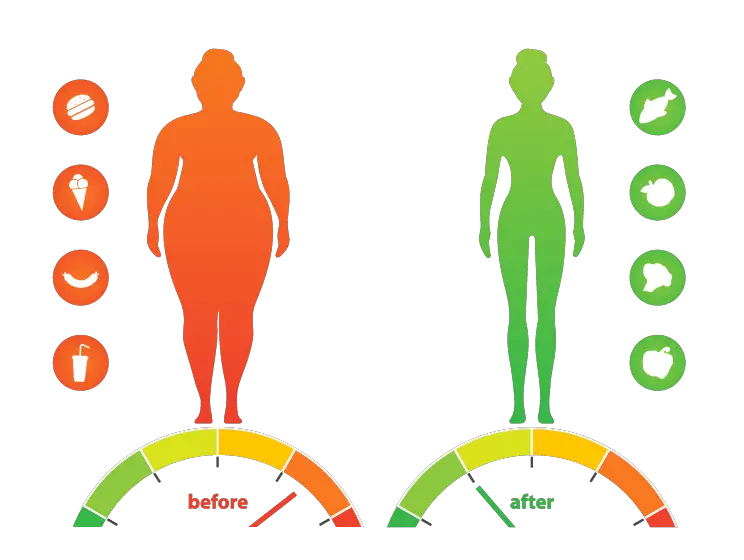 Hailey is an active individual with a few extra pounds she would like to shed. She is a casual runner and would like to run a half marathon race and get in better shape. She can almost run the distance of a 5K without stopping.
Hailey is an active individual with a few extra pounds she would like to shed. She is a casual runner and would like to run a half marathon race and get in better shape. She can almost run the distance of a 5K without stopping.
What should Hailey’s strategy be when it comes to losing weight?
Since Hailey’s weight is likely within 20 pounds of her ideal weight she should have no trouble jumping right into running. As long as she maintains her diet and shoots for slightly fewer calories she should be able to lose about half a pound to one pound a week.
She needs to incorporate some type of interval training into her weekly training program. If she isn’t already strength training, she should incorporate one cross-training day that includes weights or a kettlebell.
She could start performing distance intervals or timed intervals once a week for a period of 3 weeks. After 3 weeks you want to change up the routine by either increasing or decreasing the distance, time, and number of repeats.
Do you need a strength training regime for runners? Check out this detailed post about essential strength training for runners.
When should you NOT lose weight while training for a half marathon?
Some athletes chasing qualifiers to races such as the Boston marathon, trying to come in first in a 5K race, or trying to set a new personal record shouldn’t attempt to lose weight during their race training cycle. For these competitive race individuals, you need to shed the pounds prior to a race training cycle or when a racer is cycling through their off-season.
Naturally, these athletes might lean up during their training prior to race day, which is fine. What these athletes want to avoid is intentionally reducing their daily diet during rigorous bouts of training. Their bodies might be missing out on restorative nutrients that help aid in recovery between hard training sessions.
Most athletes at this caliper will be coupled with a training coach and/or a dietician to closely monitor their daily nutritional needs.
Related: Why Am I Struggling To Lose Weight While Running
What should I eat?
MyPlate.gov is a great place to start to show you your recommended daily calorie intake based on your sex, age, weight, height, and activity level. When you’re training for long distances such as a half-marathon, don’t forget that carbs help restore your glycogen stores for optimal performance.
Endurance Training vs. Interval Training and the fat-burning zone
To lose weight while exercising, in this specific case running, you need to run low-intensity running (endurance zone training) for long periods of time. Alternatively, you can lose weight, at a faster rate, by incorporating high-intensity workouts such as intervals.
“In a high-intensity workout, although your body uses your glycogen stores first for ‘fast energy’, it depletes the glycogen stores rapidly enough to force your body to tap on the fat storage. This means that high-intensity workouts are more efficient in burning way more total calories – both glycogen and fat calories. Ultimately, the total number of calories you burn leads to the most weight (and fat) loss.” (The Truth of the Fat Burning Zone, Dr. Ong Hean Yee)
Half marathon training will be compromised of 80-90% of endurance zone running. Endurance zone running should be run at an easy conversational pace (RPE 4-6). You do not need to include speed work (high-intensity intervals, strides, sprints) in order to finish your first half marathon. However, if you wish to lose weight you’ll either have to exercise at low intensities for long periods of time or perform high-intensity training for a shorter period of time.
When you include HIT (high-intensity training) workouts, you help your metabolic engine continue to burn calories for the next 24 hours. This is what some fitness experts refer to as the afterburn. By combining low-intensity running with high-intensity training plus eating correctly you fight weight loss from three different angles.
Related: Does Vibration Training Help You Lose Weight?
Rate of Perceived Exertion (RPE) is the key
All interval training should be completed at a rate of perceived effort (RPE) between 7-8. RPE is a scale ranging from 1 to 10. One being the easiest perceived effort and 10 being the hardest perceived effort. is based on the effort of the individual. For instance, a new runner’s perceived effort of a 9 minute/mile pace might be an 8 difficulty. A seasoned runner might see a 9 minute/mile pace as a difficulty of a 4.
To determine your actual RPE you can use a treadmill or run outside on a track or park. You don’t need to be too methodical to test your RPEs. All you need is a minute or two of running to determine your current RPE. An RPE example for a new runner might look something like this
Rate of Perceived Exertion (RPE) - EXAMPLE
| RPE | Difficulty | Talk Test | Pace |
|---|---|---|---|
| 10 | All-out - Max Effort | Can't talk, out of breath | 8:00 |
| 9 | Extremely hard | one or two words at a time | 8:30 |
| 7-8 | Medium to Hard Effort (Interval) | Can speak in small sentences | 10:00 |
| 4-6 | Moderate Effort (Endurance) | can have a conversation | 12:00 |
| 2-3 | Light Effort (walking) | No problem talking | 15:00 |
| 1 | No Effort (Sitting/Standing) | No problem talking | 0:00 |
Print out the table below and keep this with you for reference when determining your RPE per pace.
| RPE | Difficulty | Talk Test | Pace |
|---|---|---|---|
| 10 | All-out - Max Effort (Sprints/Strides) | Can't talk, out of breath | |
| 9 | Extremely hard (Speedwork) | one or two words at a time | |
| 7-8 | Medium to Hard Effort (Interval/Speedwork) | Can speak in small sentences | |
| 4-6 | Moderate Effort (Endurance) | can have a conversation | |
| 2-3 | Light Effort (walking) | No problem talking | |
| 1 | No Effort (Sitting/Standing) | No problem talking |
Different types of interval training
Interval training should be performed at an RPE between 7-8 (short sentences)
Distance Interval Example:
Distance intervals are running repeated medium-effort specified distance runs with a rest period in between. 400 x 3 x 8 distance intervals would be a distance of 400 meters with a 3 minute light jog or light walk (if new to intervals) to rest. You would repeat the same distance run 8 times. By increasing or decreasing the distance, rest period, and the number of times repeated, you can add variety to the workouts. You shouldn’t be able to hold a conversation at this pace, you should be able to relay short sentences.
An 800 x 2 x 6 will be tougher than a 400 x 3 x 8 because you would be running 800 meters with 1 less minute rest between each set.
A 400 x 4 x 6 would be easier than a 400 x 3 x 8 because you’re getting to rest one more minute between sets with only 6 repeats instead of 8.
In any of these examples above you can also increase and decrease the number of repeats to increase or decrease the difficulty.
Time Interval Example:
Time intervals are similar to distance intervals except that you use time as the variable instead of distance. 4 x 3 x 6 timed intervals translate to a 4-minute run followed by 4 minutes of rest (either walking or jogging) repeated 6 times. Again, you can change this routine by increasing or decreasing the distance, rest period, and the number of times repeated.
A 6 x 2 x 6 will be tougher than a 4 x 3 x 6 because you would be running for 6 minutes with 1 minute less rest between each set.
A 4 x 3 x 4 would be easier than a 4 x 3 x 6 because you’re repeating the interval only 4 times instead of 6 times.
Strides
Are essentially short bursts of fast running that build up from an RPE of 1 all the way to an RPE of 9 lasting less than 30 seconds. This is similar to what you would call a sprint. The big difference is that you don’t hold onto the RPE of 9 for more than a few seconds with strides. With sprints, you generally are running all-out for 30 to 90 seconds.
Benefits of strides:
- You easily incorporate them into any run.
- You’re not reaching the sprint zone so your body is not producing lactic acids. (alactic)
- You’re helping build neuromuscular coordination
- You’re shedding calories at a quick rate due to the high intensity of training
Related: Which Exercise Machine Is The Best At Helping You Lose Weight?
Interval training for beginners
How often and at what level should I run intervals during my half marathon training? If you can include conversational-paced running, strength training, and interval training all into one week, you’ll have a much better chance of succeeding at shedding those extra pounds. Below is a sample 12-week training plan that could be used for new runners.
A word of caution: every runner is different and each is at their own unique fitness level. Do not participate in any exercise that could further exacerbate an injury or cause a new one. Intervals tend to be harder on new runners possibly because they’ve simply never seen them before. If this sounds like you take it easy and determine your RPE from above to know your running effort paces and levels.
Interval Training Example for a 12 Week Half Marathon Training Cycle
CT = cross training
ST = strength training
LR = long run
Easy Runs = performed at an RPE between 5-6 (conversational pace)
Days 5,6,7 = you need to perform a LR of said mileage and either cross train one of the days and rest one of the days. If you're feeling worn out then perform 1 long run and rest for 2 days. If you rest for 2 days during your training week, rest 1 day after your long run and 1 day after your interval training day.
| Week | Day 1 | Day 2 | Day 3 | Day 4 | Days 5,6,7 |
|---|---|---|---|---|---|
| 1 | Easy Run | 400 x 2 x 4 | Easy Run | Easy Run | LR 3/ Rest / CT |
| 2 | Easy Run | 400 x 2 x 4 | Easy Run | Easy Run | LR 4/ Rest / CT |
| 3 | Easy Run | 400 x 2 x 4 | Easy Run | Easy Run | LR 5/ Rest / CT |
| 4 | Easy Run | 400 x 2 x 6 | Easy Run | Easy Run | LR 6/ Rest / CT |
| 5 | Easy Run | 400 x 2 x 6 | Easy Run | Easy Run | LR 7/ Rest / CT |
| 6 | Easy Run | 400 x 2 x 6 | Easy Run | Easy Run | LR 8/ Rest / CT |
| 7 | Easy Run | 800 x 2 x 4 | Easy Run | Easy Run | LR 9/ Rest / CT |
| 8 | Easy Run | 800 x 2 x 4 | Easy Run | Easy Run | LR 10/ Rest / CT |
| 9 | Easy Run | 800 x 2 x 4 | Easy Run | Easy Run | LR 11/ Rest / CT |
| 10 | Easy Run | 800 x 2 x 8 | Easy Run | Easy Run | LR 12/ Rest / CT |
| 11 | Easy Run | 800 x 2 x 8 | Easy Run | Easy Run | LR 8/ Rest / CT |
| 12 | Easy Run | Easy Run | Rest | Rest / Easy Light Run | Race Day! |
Three weight-loss obstacles to watch out for
When you’re trying to lose weight it can sometimes feel like an uphill battle. It’s not enough that you have to watch what you eat, how much you eat, and how often you exercise. Through my own struggles of weight loss spanning close to a decade, I realized three obstacles that threw me for a spin when trying to lose weight.
1. The calorie ninja
The ultimate goal of your body is to be able to spend the least amount of calories while running a given distance.
When you first start running your body is inefficient at burning calories. When you start running more and more your body learns to use oxygen and glycogen stores more efficiently. As your body becomes more efficient at running it burns fewer calories. Your body is much smarter than we think when it comes to adapting itself to different habits such as running.
2. The over-exaggerated smartwatch
Smartwatches are known to give you inaccurate results. On average most runners burn between 100 and 150 calories during 1 mile of running. How many calories you burn depends on how physically fit you are and your overall body mass size. It makes sense that someone that is 6 foot 6 inches would burn more energy than someone that is 5 feet tall.
Smartwatches sometimes aren’t that smart when it counts how many actual calories you’ve burnt. This is partially due to the design of the smartwatch. Most smartwatches take an average reading of your heart rate. Even after your heart rate slows down, your smartwatch is still reading the higher level of your heart rate for many seconds afterward, which falsely states the calories burned.
For a detailed compiled list of the best running watches for half marathons, check out:
Best Running Watches For Half Marathons
If you accurately want to know exactly how many calories you’re burning during exercise, the closest device to get you there is a chest strapped heart rate monitor (HRM). You strap the HRM around your chest and place the HRM directly over your heart. The HRM can then communicate with your smartphone via Bluetooth to gather your heart rate data. For my recommendations on HRMs check out my recommendations for runners page.
3. The overcompensation factor (halo effect)
Have you ever known anyone to train for a half or full marathon that has actually gained weight? How in the world can someone gain weight while training for a half or full marathon? You watched them put in mile after mile of training and their moans of being soar for running 12 miles in a long run. Yet, they still somehow gain weight on the way to their half or full marathon race day.
The reason why runners gain weight during half marathon training is partially due to the overcompensation factor. The overcompensation factor is simply overstating how many calories you’ve actually burned.
For instance, the calories burned in a 5K race don’t equal the same amount of calories as a cheeseburger and fries. At best, the total amount of calories burned from a 5K race is probably around 300 – 400 calories. A cheeseburger and fries would be around 700 to 800 calories. as you can see 400 calories burnt doesn’t equal 800 calories consumed. I’m not saying that cheeseburgers are bad, I just want you to be wary of what you consume and when.
Think of your daily calorie totals as a spending budget. You only get so many calories a day. Once you use up all of your calories, you don’t get any more to spend.
For more weight loss obstacles that might not be on your immediate radar check out this post, 3 unconventional things that might be preventing you from losing weight.
Have you heard of aqua jogging? This is a great exercise for individuals that need a little less impact on the joints. Check out my detailed post on what aqua jogging is and how to get started with simple routines.
Tips for weight loss
- Drink plenty of water. Half your weight in water (oz) is a good goal to shoot for. How much water do you need for a half marathon? Click here for more info.
- Carbs are not the enemy. Yes, you want to stay away from cookies, candy, cakes, pies, etc., however, your body will be burning carbs during exercise. you need to restore those carbs in order to refuel for future runs. Cutting healthy carbs is not the way to go.
- You don’t need to eat prior to short runs lasting less than 60 minutes. I run most of my shorter runs on an empty stomach. Refuel after running the shorter times/distances. Check out my ultra guide to fueling for a half marathon/marathon – Other websites charge money for the same fueling information.
- You don’t need a sports drink after short runs (unless it’s extremely hot or you’ve sweated profusely).
- Try to eat the colors of the rainbow each day between your veggies and fruits. The color of fruits is representative of the phytonutrients they possess (Phytonutrients: Paint your plate with the colors of the rainbow, Katherine D. McManus, MS, RD, LDN)
- Sign up for a successful, science-based, clinically proven, weight loss system that actually works. Check out these made-for-you meal preps that can help you lose weight, feel great, and get in shape! Click here to see why clients are raving about Diet To Go.
Myth #1: You can lose weight alone by running without reducing your daily intake of calories.
False, in order to lose a significant amount of weight you must have a daily deficiency of calories.
The only way this answer would be true is if you consumed exactly what you burned every day and ran daily which would burn extra calories, thus reducing your total daily calorie intake. This total daily calorie deficit would allow you to slowly lose weight over time
I want this statement to really “hit home” with you: Running alone is not the key to helping you lose weight. It’s more about what you eat and portion control.
Weight is gained slowly. Why should shedding weight be any faster?
The sedentary lifestyle of the droves of individuals is causing the overweight factor to start to tip to an unhealthy level. Weight gain is a slow process that happens just slightly every week over the years of time. Without exercising, or an astringent diet, weight loss can seem like a hopeless journey of deprivation and misery. It doesn’t have to look like this.
Full Disclosure: I’m an RRCA certified running coach and NASM Weight Loss Specialist. I’m not a medically licensed physician or sports dietician. The advice that is given in this post is based on my training as a coach and my opinion. Before implementing any training program you should seek medical or nutritional advice from an appropriately licensed health/medical professional.
Related: How To Fortify Your Mind To Help You Lose Weight!
Are you looking for plus-size running gear and advice?
Check out my brand new website dedicated to plus-size runners. I struggled with weight gain/loss for decades before leveling out in my upper thirties. I’m now trying to help others transform their minds, bodies, and lifestyles focused on eating properly and implementing running as an outlet for your calories. Check out the website here: Plus Size Runner.
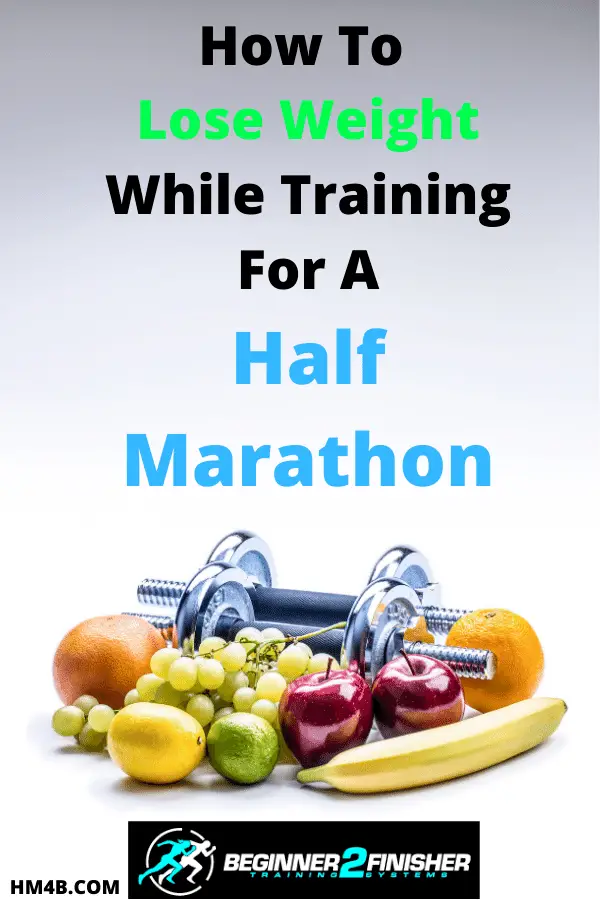
| Help support me and subscribe to my YouTube channel. YouTube video - 30 ways to make your runs less painful! Coach Scott's Credentials:
|
To sign up for a FREE half marathon training schedule, log sheet, and pace predictor CLICK HERE.
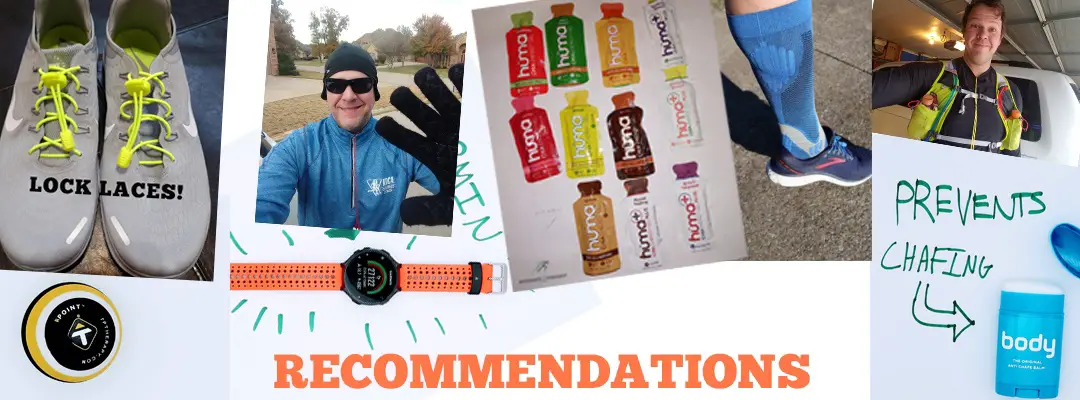
Recommended gear for runners
Connect with me:
| facebook.com/BeginnerToFinisher/ |


